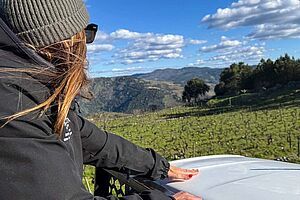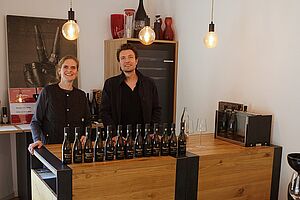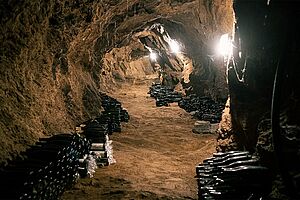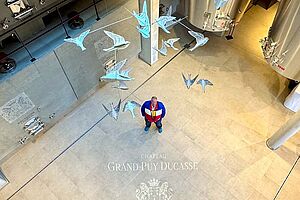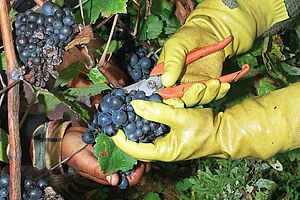Die Lese ist vorbei, die Trauben sind weitestgehend im Keller und nun sind wir gespannt wie viel Potenzial tatsächlich im Jahrgang steckt. Wir hatten bereits erste Stimmen zur Weinlese 2016 gesammelt, und die Eindrücke vom Lesegut schienen durchweg sehr positiv. Nun meldet sich das Château Pape Clément zu Wort und bestätigt im eigenen Erntebericht die ersten positiven Stimmen.
Château Pape Clément:
»A demanding vintage that saw us waver between anxiety and hope, but with the most satisfactory outcome!
2016 was marked by extremely heavy rainfall in the first quarter, with total precipitation three times higher than in other years (510 mm compared with 177 mm on average). As for temperature, the vintage started with a particularly mild winter, +2 °C compared with the average between November 1st and February 28th. Bud burst was early, by 6 days on average.
The humid conditions of winter carried on into spring, but in a context that was distinctly cooler than usual. For this reason, the vine kept falling behind until the end of June.
The uniformity seen at bud burst was maintained at flowering and, though dry days between 15 May and 15 June were extremely rare, this miraculously took place during a window of a few sunny and rather hot days (>20 °C).
By this stage, 2016 was among the latest vintages of the past 20 years (only 2013 beats it) and prospects didn’t seem very good for the harvest.
It was as from June 20th that conditions changed radically and got closer to seasonal averages. By the time of véraison, the water balance already showed a clear deficit. This water restraint was sufficiently early to favour thickening of the skins and a build-up of polyphenols.
The summer temperatures, close to multi-year averages, did not however make up for the lateness built up in the spring, and the véraison, though remarkably uniform, started late (as from July 25th).
The ripening process intensified as from September 13th thanks to 40 millimetres of rain.
Under these favourable conditions, which continued up to the end of October, the harvest could take place calmly. The climatic conditions were ideal and the state of health excellent (we have rarely seen so little botrytis), allowing us to wait for the required phenolic ripeness. In white as in red, each plot, even each section of each plot, was picked at optimum ripeness and sorting this year was almost an afterthought.
The whites were picked between September 12th and 27th, in two passes. The yields were unexpected (nearly 45 hectolitres per hectare, a record at Pape Clément) and the juices have kept an impressive aromatic freshness and show good balance between degree and acidity. Our clay soil, which remained fresh despite the episode of drought, was very favourable to the proper ripening of the whites.
The reds were harvested between September 30th and October 21st (among the latest dates the château has seen). The mildest climatic conditions and the precision work undertaken during the harvest allowed us to stagger picking as we wanted and wait for the optimum ripeness of the berries, as we have never seen before. 2016 being a late vintage, it was important not to harvest too early, to allow as long as possible for the tannic structure to become refined and to protect against any rustic and harsh character. The potential alcohol levels are correct and the acidities rather low, which is favourable for the aromatic expression of the grapes. The potential of the tannins is very interesting and the extractability of the skins higher than the average.
Always anxious to improve the quality of our wines, this year we chilled our crop for 24 hours in a cold room, we extended the length of the cold soaking before fermentation and all that with the purpose of enhancing the primary aromas in the juice. Also, for the second consecutive year, we have undertaken trials aimed at finding alternative additives to replace the use of sulphur (bio-protection).
As for several years now, we particularly invested in 2016 in the protection of the environment. As an example, 20 % of the vineyard is biodynamic, nearly 50 % of the vineyard is cultivated using draught animals, and we are equipped with an electric tractor.«

